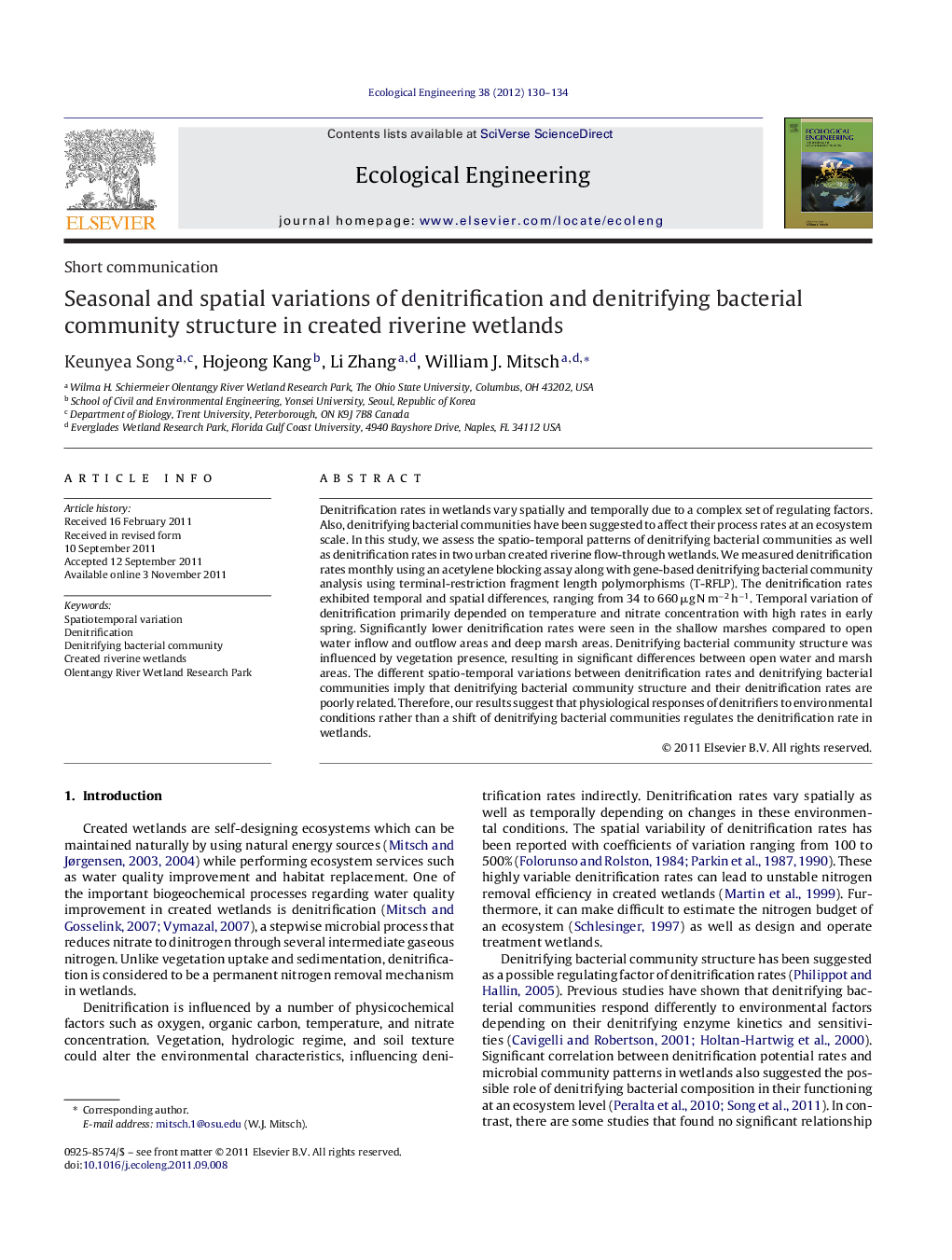| Article ID | Journal | Published Year | Pages | File Type |
|---|---|---|---|---|
| 4390104 | Ecological Engineering | 2012 | 5 Pages |
Denitrification rates in wetlands vary spatially and temporally due to a complex set of regulating factors. Also, denitrifying bacterial communities have been suggested to affect their process rates at an ecosystem scale. In this study, we assess the spatio-temporal patterns of denitrifying bacterial communities as well as denitrification rates in two urban created riverine flow-through wetlands. We measured denitrification rates monthly using an acetylene blocking assay along with gene-based denitrifying bacterial community analysis using terminal-restriction fragment length polymorphisms (T-RFLP). The denitrification rates exhibited temporal and spatial differences, ranging from 34 to 660 μg N m−2 h−1. Temporal variation of denitrification primarily depended on temperature and nitrate concentration with high rates in early spring. Significantly lower denitrification rates were seen in the shallow marshes compared to open water inflow and outflow areas and deep marsh areas. Denitrifying bacterial community structure was influenced by vegetation presence, resulting in significant differences between open water and marsh areas. The different spatio-temporal variations between denitrification rates and denitrifying bacterial communities imply that denitrifying bacterial community structure and their denitrification rates are poorly related. Therefore, our results suggest that physiological responses of denitrifiers to environmental conditions rather than a shift of denitrifying bacterial communities regulates the denitrification rate in wetlands.
